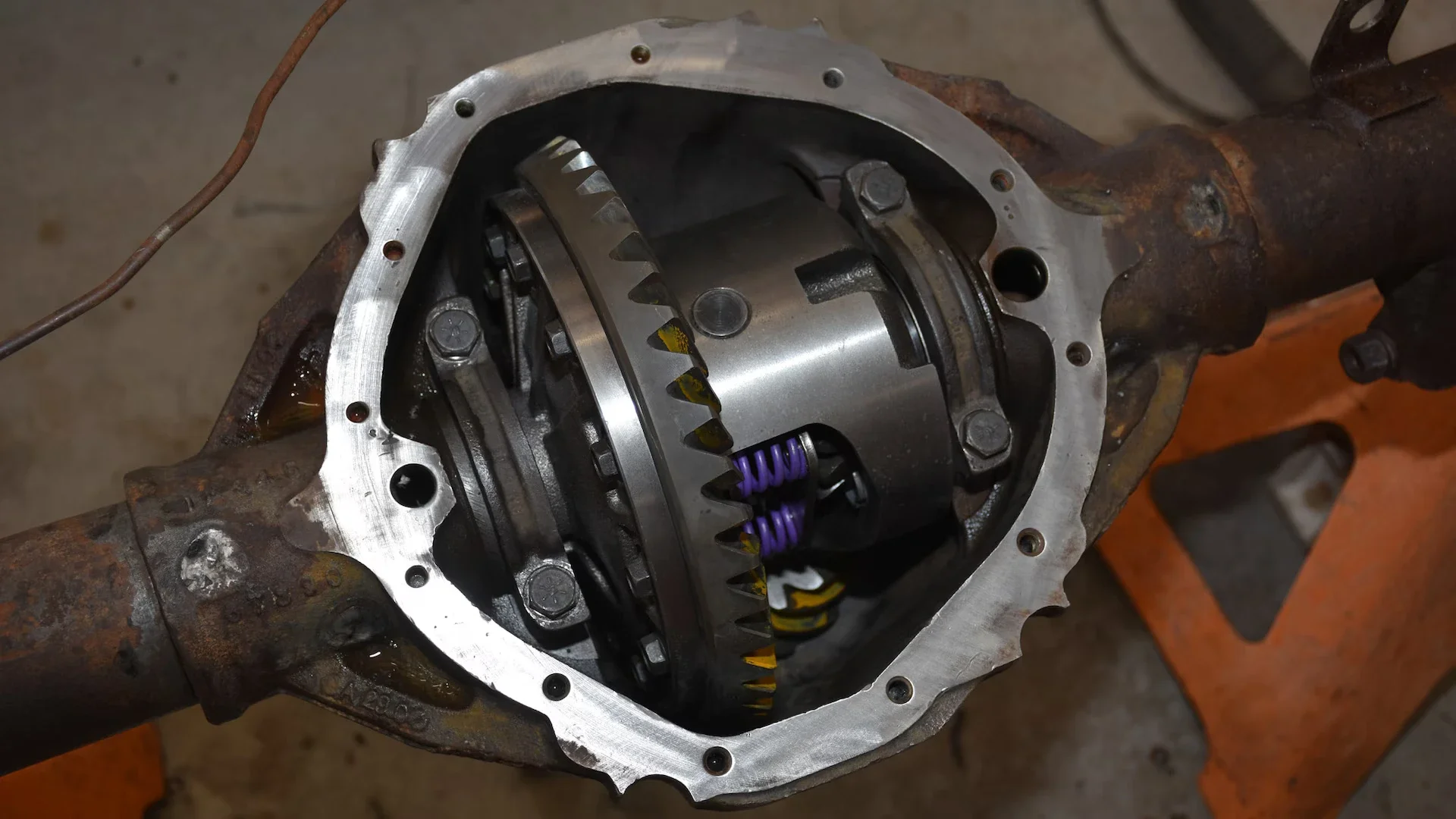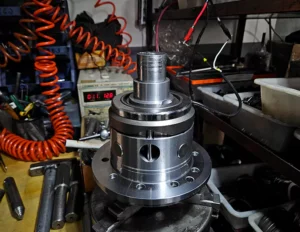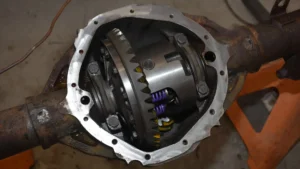One common question among car enthusiasts and mechanics is: Does an LSD (Limited Slip Differential) actually require maintenance? Some believe LSDs are maintenance-free, while others insist on regular servicing. The truth is, LSDs experience wear and fluid degradation over time, which can lead to performance loss, excessive noise, or even mechanical failure if neglected.
A Limited Slip Differential (LSD) is essential for optimizing traction, handling, and performance in high-performance and off-road vehicles. Proper LSD maintenance ensures longevity, prevents excessive wear, and maintains optimal performance. This guide covers everything you need to know about LSD maintenance, including fluid changes, common issues, and troubleshooting tips.
Why LSD Maintenance Is Important
LSDs rely on internal components such as clutch packs, helical gears, or viscous fluids to distribute torque efficiently. Over time, friction materials wear down, and differential fluid degrades, leading to reduced performance and potential mechanical failure. Regular maintenance helps:
- Prevent clutch plate wear
- Maintain proper torque distribution
- Reduce noise and vibration
- Extend the lifespan of the differential

Key LSD Maintenance Practices
Regular maintenance is crucial to ensure the longevity and optimal performance of your Limited Slip Differential (LSD). Below are the key practices to keep your LSD functioning at its best:
1. Regular LSD Fluid Changes
Changing the LSD fluid is one of the most important maintenance tasks to ensure smooth operation. Over time, LSD fluid degrades due to heat, friction, and contamination from metal particles, which can lead to poor performance or even mechanical failure. The right fluid change interval depends on your driving conditions, but it’s generally recommended every 30,000-50,000 miles for normal use, or more frequently for performance vehicles or heavy off-road use.
Steps for Changing LSD Fluid:
- Preparation:Ensure the vehicle is parked on a level surface and the engine is turned off. Gather the necessary tools: a jack, jack stands, a drain pan, and the correct type of LSD gear oil with friction modifiers (e.g., 75W-90 GL-5).
- Lift the Vehicle:Use a jack to lift the vehicle and secure it with jack stands for safety.
- Locate the Drain Plug:Find the differential drain plug, usually located at the bottom of the differential housing. Consult your vehicle’s manual for exact location details.
- Drain the Old Fluid:Place a drain pan beneath the differential, then remove the drain plug to let the old fluid drain completely. As the fluid drains, inspect it for metal shavings or discoloration, which may indicate internal wear or contamination.
- Refill with Fresh Fluid:Once the fluid has drained, replace the drain plug and refill the differential with fresh LSD gear oil. Be sure to fill the differential until the fluid reaches the recommended level (check your owner’s manual for the exact capacity). It’s important to use the recommended fluid type and ensure that the oil contains friction modifiers to keep the LSD functioning properly.
- Test Drive: After refilling the fluid, perform a test drive to check for any abnormalities such as noises, vibrations, or leaks. If any issues persist, further inspection of other components may be needed.

Why Fluid Change Matters:
Over time, as friction materials inside the differential degrade, the fluid’s viscosity and friction-modifying properties change, which can result in improper torque distribution. Regular fluid changes prevent this from happening, helping to maintain smooth and consistent operation.
2.Inspecting and Replacing LSD Clutch Packs
LSDs with clutch pack systems require periodic inspection and replacement of the clutch packs to ensure proper torque transfer between the wheels. If these clutch packs wear down, it can result in increased wheel spin, jerky power delivery, or uneven traction.
Signs of Worn Clutch Packs:
- Excessive Wheel Spin: If the wheels spin freely, especially under hard acceleration, the clutch packs may be worn or slipping.
- Noisy Operation: A clunking, whining, or grinding noise during turns or under acceleration could indicate that the clutch packs need attention.
- Inconsistent Power Delivery: If you notice irregular acceleration or uneven torque distribution between the wheels, the clutch packs could be worn.
Steps to Inspect and Replace Clutch Packs:
- Remove the Differential Cover:Safely lift the vehicle and remove the differential cover to access the clutch packs.
- Inspect the Clutch Packs:Look for signs of wear, such as grooves, scoring, or thinning of the clutch plates. Check for any signs of contamination (e.g., debris or discolored oil) that may indicate internal damage.
- Replace Worn Clutch Packs:If the clutch packs show signs of excessive wear, replace them with new ones according to the manufacturer’s specifications. Be sure to follow the manufacturer’s guidelines regarding installation and lubrication of the new clutch packs.
Why Clutch Pack Maintenance Matters:
Worn clutch packs lead to poor traction, especially during acceleration or turning. Replacing them in time helps to restore optimal power distribution, preventing slippage or damage to the LSD’s internals.
3.Checking for Common LSD Issues
LSDs, like all mechanical components, can develop issues over time. Being proactive about identifying and addressing these problems can prevent costly repairs.
Common Issues and Solutions:
- Cause: Low-quality or degraded fluid, worn clutch packs, or incorrect fluid type.
- Solution: Change the fluid to the correct type and ensure it has the necessary friction modifiers. If noise persists, inspect the clutch packs and bearings for wear.
B. LSD Not Engaging Properly
- Cause: Worn clutch plates, contaminated fluid, or broken differential components.
- Solution: Inspect the clutch packs for wear, and replace them if necessary. Ensure the fluid is clean and properly filled.
C. Fluid Leaks
- Cause: Worn seals or an overfilled differential.
- Solution: Check for leaks around the seals and replace any worn seals. Make sure the fluid is not overfilled, as excessive fluid can cause foaming, leading to poor performance.
4.Using the Right LSD Gear Oil
The choice of LSD gear oil is critical to the performance and lifespan of your differential. Not all gear oils are created equal, and using the wrong oil can lead to reduced performance, increased friction, or even failure.
Recommended LSD Fluids:
- Motul Gear 300 75W-90:Ideal for high-performance LSDs, offering excellent thermal stability and reduced wear.
- Red Line 75W-90 GL-5 Gear Oil:A great choice for both street and track applications, ensuring proper friction control and smooth operation.
- Royal Purple Max Gear 75W-90: Known for its high-quality synthetic formulation, which provides superior protection against wear and heat.
Why Choosing the Right Fluid Matters:
The correct LSD fluid contains friction modifiers specifically designed to handle the torque transfer and power distribution unique to LSD systems. Using the right fluid ensures optimal performance, reduces wear, and helps protect internal components from damage.
Conclusion
Proper LSD maintenance is essential for ensuring smooth performance, longevity, and reliability. By regularly changing LSD fluid, inspecting clutch packs, and addressing issues early, you can keep your differential in top condition. Whether you’re driving a sports car, off-road vehicle, or daily driver, these maintenance tips will help you maximize your LSD’s potential.



